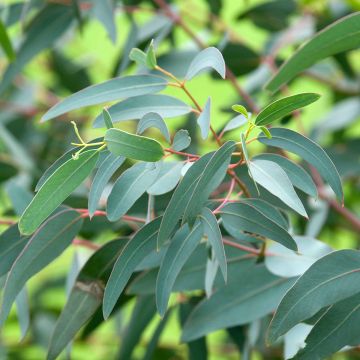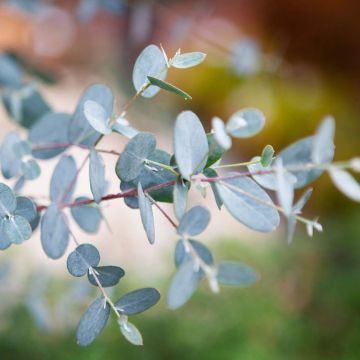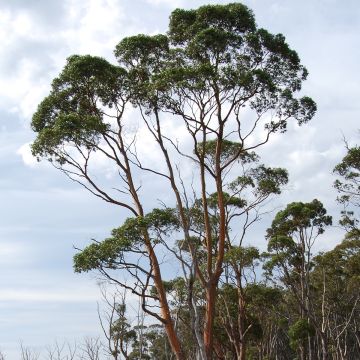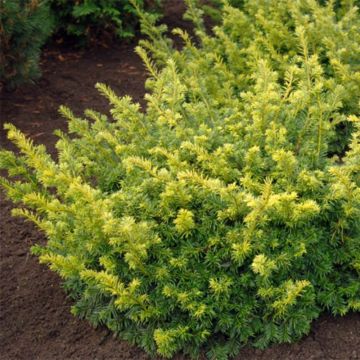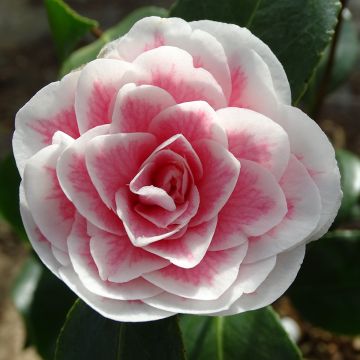

Eucalyptus subcrenulata
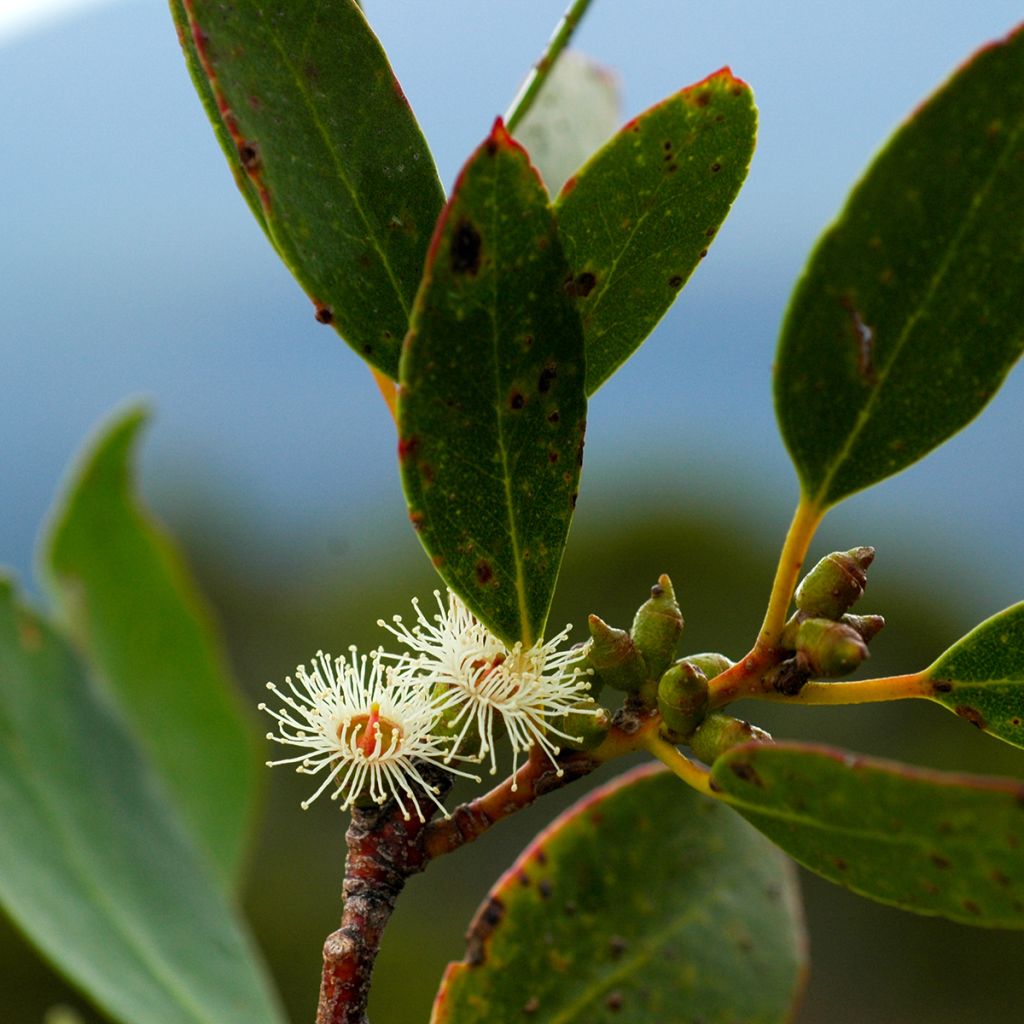

Eucalyptus subcrenulata
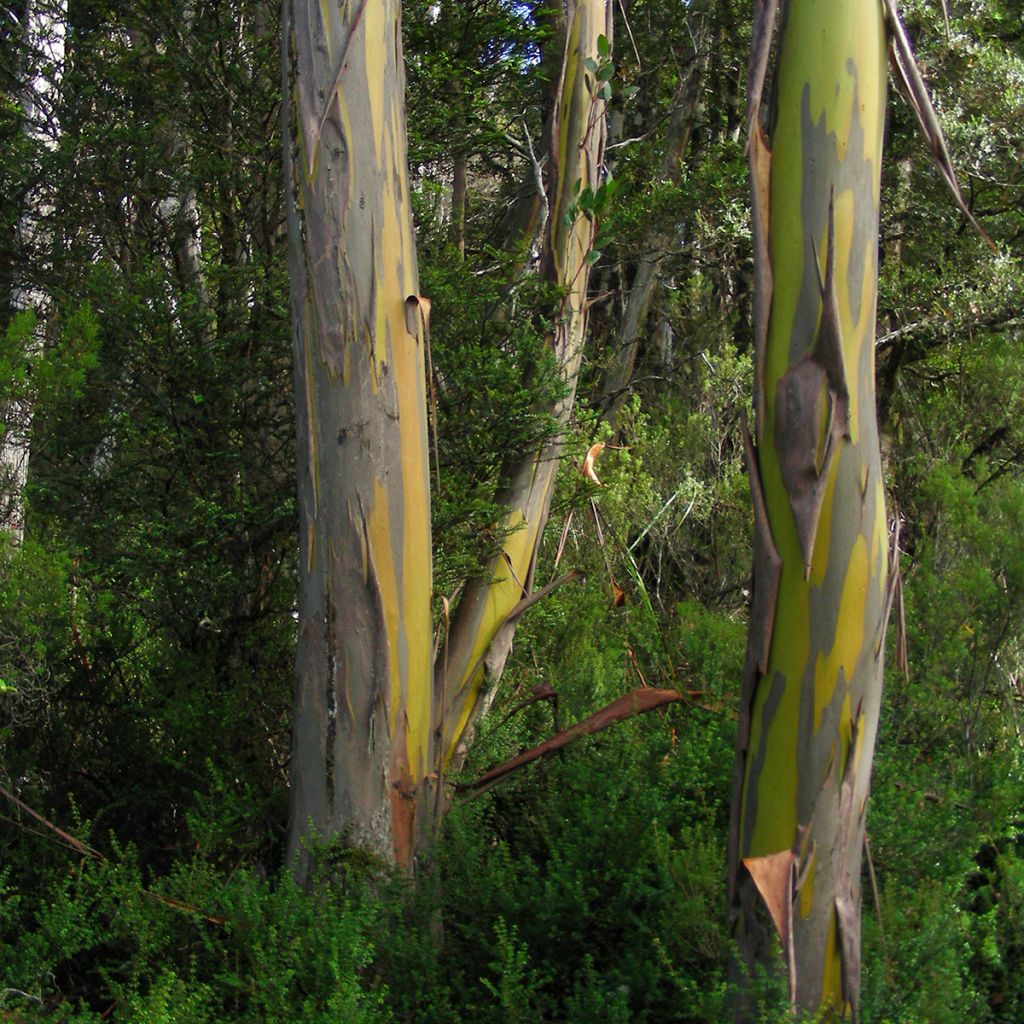

Eucalyptus subcrenulata
Eucalyptus subcrenulata
Eucalyptus subcrenulata
Tasmanian alpine yellow gum
This item cannot be shipped to the selected country
Delivery charge from €5.90
More information
Schedule delivery date,
and select date in basket
This plant carries a 24 months recovery warranty
More information
We guarantee the quality of our plants for a full growing cycle, and will replace at our expense any plant that fails to recover under normal climatic and planting conditions.
From €5.90 for pickup delivery and €6.90 for home delivery
Express home delivery from €8.90.
Does this plant fit my garden?
Set up your Plantfit profile →
Description
Eucalyptus subcrenulata, also known as Alpine Yellow Gum, is a botanical species native to the highlands of Tasmania, the southern island of Australia. Because of its distant mountainous origin from the Tropic of Capricorn, it displays good hardiness, which makes it easier to acclimatise in our gardens. A tree with moderate growth, it reaches about fifteen metres in height with a conical to slightly spreading habit. Although its flowers are of little interest, it is decorative due to its beautiful smooth bark where different shades mix, as well as its lovely bright green, evergreen foliage. Tolerating a little limestone in the soil, it grows in the sun in humus-bearing, well-draining soils, not too dry in summer.
Eucalyptus subcrenulata belongs to the large Myrtaceae family, like the Callistemon (Bottlebrush), the Feijoa or the Myrtle. The Eucalyptus genus has more than 800 species, virtually all native to Australia, except for a few from Southeast Asia. This one is endemic to Tasmania, an island in the extreme south of Australia, it develops there in the central part, in highlands and alpine regions. This Eucalyptus most often grows on slopes that are humus-bearing and rocky, well exposed to the sun.
With moderately fast growth, it forms a medium-sized tree, 15 to 20 m (49 ft 2 in to 65 ft 7 in) high, and half as wide. The trunk is generally clear at the base, and supports conical branching, with a sometimes slightly spreading crown. The very smooth bark displays a beautiful combination of colours, pale grey, beige or brown, and green-yellow. Like most species, this Eucalyptus has a juvenile foliage different from the adult. The young leaves are sessile (without petiole) and opposite, ovate in shape. Then, the adult foliage has an alternate arrangement, with lanceolate leaves, measuring 5 to 13 cm (2 to 5.1 in) long and 2 to 4.5 cm (0.8 to 1.8 in) wide and equipped with petioles up to 3.5 cm (1.4 in) long. Containing glands rich in essential oils, they give off a spicy scent when crushed. They are evergreen and lovely, shiny green.
Flowering occurs mainly between December and March in Tasmania (in the southern hemisphere which corresponds to our summer). The insignificant inflorescences gather in 3 floral buds, which open onto small white flowers of which we mainly see the 2 cm (0.8 in) diameter stamen. They then evolve into small fruits, greenish to brown-grey, also insignificant.
This Eucalyptus has several interesting features for ornamental use. Firstly, its hardiness of around -15°C, which allows it to be planted in most regions. Then, although it prefers neutral to acid soils, it tolerates limestone soils quite well. Finally, while it does not like drought, it is still quite tolerant of most conditions, just not tolerating excess water (it needs draining soil).
Eucalyptus subcrenulata will allow many garden owners to enjoy a species that is relatively easy to acclimatise, and much less known than the classic E. gunnii. This medium-sized tree can be planted alone or in the background to give an exotic air to the garden, even in a cool climate. It can then be associated with bushes like the Grevillea juniperina, very decorative with its dark green foliage that highlights its long-lasting bright red flowering. In a milder climate, the Azara microphylla, or Chilean Mimosa, will also be a good companion with its small dark green leaves enhanced by its delicately scented yellow spring flowering. To complete the scene, a few feet of Phormium in various colours, green, purple, variegated with yellow or other, will look great at the foot of this Eucalyptus.
Report an error about the product description
Plant habit
Flowering
Foliage
Botanical data
Eucalyptus
subcrenulata
Myrtaceae
Tasmanian alpine yellow gum
Australia
Other Eucalyptus
Planting and care
Eucalyptus subcrenulata is best planted at the beginning of spring in cold regions, and the beginning of autumn in warmer climates, in well-drained soil, still moist in summer, as it does not like dryness. Preferring neutral to acidic soils, it nevertheless tolerates slightly chalky ones. Plant it in a sunny exposure. A well-established subject is hardy down to -15 °C (5 °F) in these conditions, young plants are more tender. In many regions, you can plant it in open ground, ensuring good drainage with some coarse sand, pozzolan or gravel. Then let nature take its course, the growth is quite rapid. Water regularly for the first two years, then in summer, especially in drier regions. Fertiliser is not recommended. Pruning is well tolerated, after flowering.
Gum trees are useful for drying out wet soils, as they are big water consumers even in winter. Mountain species are useful for their hardiness, but they dislike heatwaves and dry soil.
Planting period
Intended location
Care
This item has not been reviewed yet - be the first to leave a review about it.
Evergreen shrubs
Haven't found what you were looking for?
Hardiness is the lowest winter temperature a plant can endure without suffering serious damage or even dying. However, hardiness is affected by location (a sheltered area, such as a patio), protection (winter cover) and soil type (hardiness is improved by well-drained soil).

Photo Sharing Terms & Conditions
In order to encourage gardeners to interact and share their experiences, Promesse de fleurs offers various media enabling content to be uploaded onto its Site - in particular via the ‘Photo sharing’ module.
The User agrees to refrain from:
- Posting any content that is illegal, prejudicial, insulting, racist, inciteful to hatred, revisionist, contrary to public decency, that infringes on privacy or on the privacy rights of third parties, in particular the publicity rights of persons and goods, intellectual property rights, or the right to privacy.
- Submitting content on behalf of a third party;
- Impersonate the identity of a third party and/or publish any personal information about a third party;
In general, the User undertakes to refrain from any unethical behaviour.
All Content (in particular text, comments, files, images, photos, videos, creative works, etc.), which may be subject to property or intellectual property rights, image or other private rights, shall remain the property of the User, subject to the limited rights granted by the terms of the licence granted by Promesse de fleurs as stated below. Users are at liberty to publish or not to publish such Content on the Site, notably via the ‘Photo Sharing’ facility, and accept that this Content shall be made public and freely accessible, notably on the Internet.
Users further acknowledge, undertake to have ,and guarantee that they hold all necessary rights and permissions to publish such material on the Site, in particular with regard to the legislation in force pertaining to any privacy, property, intellectual property, image, or contractual rights, or rights of any other nature. By publishing such Content on the Site, Users acknowledge accepting full liability as publishers of the Content within the meaning of the law, and grant Promesse de fleurs, free of charge, an inclusive, worldwide licence for the said Content for the entire duration of its publication, including all reproduction, representation, up/downloading, displaying, performing, transmission, and storage rights.
Users also grant permission for their name to be linked to the Content and accept that this link may not always be made available.
By engaging in posting material, Users consent to their Content becoming automatically accessible on the Internet, in particular on other sites and/or blogs and/or web pages of the Promesse de fleurs site, including in particular social pages and the Promesse de fleurs catalogue.
Users may secure the removal of entrusted content free of charge by issuing a simple request via our contact form.
The flowering period indicated on our website applies to countries and regions located in USDA zone 8 (France, the United Kingdom, Ireland, the Netherlands, etc.)
It will vary according to where you live:
- In zones 9 to 10 (Italy, Spain, Greece, etc.), flowering will occur about 2 to 4 weeks earlier.
- In zones 6 to 7 (Germany, Poland, Slovenia, and lower mountainous regions), flowering will be delayed by 2 to 3 weeks.
- In zone 5 (Central Europe, Scandinavia), blooming will be delayed by 3 to 5 weeks.
In temperate climates, pruning of spring-flowering shrubs (forsythia, spireas, etc.) should be done just after flowering.
Pruning of summer-flowering shrubs (Indian Lilac, Perovskia, etc.) can be done in winter or spring.
In cold regions as well as with frost-sensitive plants, avoid pruning too early when severe frosts may still occur.
The planting period indicated on our website applies to countries and regions located in USDA zone 8 (France, United Kingdom, Ireland, Netherlands).
It will vary according to where you live:
- In Mediterranean zones (Marseille, Madrid, Milan, etc.), autumn and winter are the best planting periods.
- In continental zones (Strasbourg, Munich, Vienna, etc.), delay planting by 2 to 3 weeks in spring and bring it forward by 2 to 4 weeks in autumn.
- In mountainous regions (the Alps, Pyrenees, Carpathians, etc.), it is best to plant in late spring (May-June) or late summer (August-September).
The harvesting period indicated on our website applies to countries and regions in USDA zone 8 (France, England, Ireland, the Netherlands).
In colder areas (Scandinavia, Poland, Austria...) fruit and vegetable harvests are likely to be delayed by 3-4 weeks.
In warmer areas (Italy, Spain, Greece, etc.), harvesting will probably take place earlier, depending on weather conditions.
The sowing periods indicated on our website apply to countries and regions within USDA Zone 8 (France, UK, Ireland, Netherlands).
In colder areas (Scandinavia, Poland, Austria...), delay any outdoor sowing by 3-4 weeks, or sow under glass.
In warmer climes (Italy, Spain, Greece, etc.), bring outdoor sowing forward by a few weeks.



































